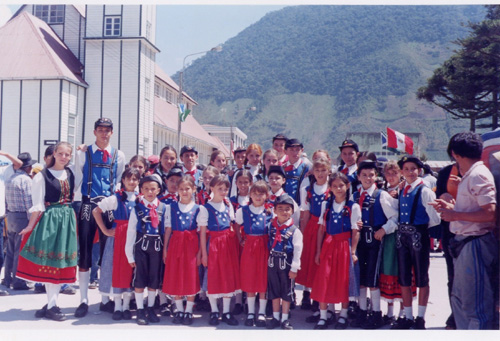|
Prosopanche
''Prosopanche'' is a group of parasitic plants described as a genus in 1868. It is native to South America and Central America.Forzza, R. C. 2010. Lista de espécies Flora do Brasil http://floradobrasil.jbrj.gov.br/2010 . Jardim Botânico do Rio de Janeiro, Rio de Janeiro Taxonomy The following species are listed within the genus ''Prosopanche'': # '' Prosopanche americana'' (R.Br.) Baill. - Pasco, N Argentina, S Brazil # '' Prosopanche bonacinae'' Speg. - Argentina, Paraguay, Rio Grande do Sul # '' Prosopanche caatingicola'' R.F.Machado & L.P.Queiroz - Bahia Bahia ( , , ; meaning "bay") is one of the 26 states of Brazil, located in the Northeast Region of the country. It is the fourth-largest Brazilian state by population (after São Paulo, Minas Gerais, and Rio de Janeiro) and the 5th-largest ... # '' Prosopanche costaricensis'' L.D.Gómez - Costa Rica References {{Taxonbar, from=Q6088033 Aristolochiaceae Piperales genera Parasitic plants ... [...More Info...] [...Related Items...] OR: [Wikipedia] [Google] [Baidu] |
Aristolochiaceae
The Aristolochiaceae () are a family, the birthwort family, of flowering plants with seven genera and about 400 known species belonging to the order Piperales. The type genus is '' Aristolochia'' L. Description They are mostly perennial, herbaceous plants, shrubs, or lianas. The membranous, cordate simple leaves are spread out, growing alternately along the stem on leaf stalks. The margins are commonly entire. No stipules are present. The bizarre flowers are large to medium-sized, growing in the leaf axils. They are bilaterally or radially symmetrical. Classification Aristolochiaceae are magnoliids, a basal group of angiosperms which are not part of the large categories of monocots or eudicots. As of APG IV (2016), the former families Hydnoraceae and Lactoridaceae are included, because exclusion would make Aristolochiaceae in the traditional sense paraphyletic. Some newer classification schemes, such as the update of the Angiosperm Phylogeny Group, place the fa ... [...More Info...] [...Related Items...] OR: [Wikipedia] [Google] [Baidu] |
Parasitic Plants
A parasitic plant is a plant that derives some or all of its nutritional requirements from another living plant. They make up about 1% of angiosperms and are found in almost every biome. All parasitic plants develop a specialized organ called the haustorium, which penetrates the host plant, connecting them to the host vasculature – either the xylem, phloem, or both. For example, plants like ''Striga'' or '' Rhinanthus'' connect only to the xylem, via xylem bridges (xylem-feeding). Alternately, plants like ''Cuscuta'' and some members of ''Orobanche'' connect to both the xylem and phloem of the host. This provides them with the ability to extract water and nutrients from the host. Parasitic plants are classified depending on the location where the parasitic plant latches onto the host (root or stem), the amount of nutrients it requires, and their photosynthetic capability. Some parasitic plants can locate their host plants by detecting volatile chemicals in the air or soil give ... [...More Info...] [...Related Items...] OR: [Wikipedia] [Google] [Baidu] |
South America
South America is a continent entirely in the Western Hemisphere and mostly in the Southern Hemisphere, with a relatively small portion in the Northern Hemisphere at the northern tip of the continent. It can also be described as the southern Subregion#Americas, subregion of a single continent called Americas, America. South America is bordered on the west by the Pacific Ocean and on the north and east by the Atlantic Ocean; North America and the Caribbean Sea lie to the northwest. The continent generally includes twelve sovereign states: Argentina, Bolivia, Brazil, Chile, Colombia, Ecuador, Guyana, Paraguay, Peru, Suriname, Uruguay, and Venezuela; two dependent territory, dependent territories: the Falkland Islands and South Georgia and the South Sandwich Islands; and one administrative division, internal territory: French Guiana. In addition, the ABC islands (Leeward Antilles), ABC islands of the Kingdom of the Netherlands, Ascension Island (dependency of Saint Helena, Asce ... [...More Info...] [...Related Items...] OR: [Wikipedia] [Google] [Baidu] |
Central America
Central America ( es, América Central or ) is a subregion of the Americas. Its boundaries are defined as bordering the United States to the north, Colombia to the south, the Caribbean Sea to the east, and the Pacific Ocean to the west. Central America consists of eight countries: Belize, Costa Rica, El Salvador, Guatemala, Honduras, Mexico, Nicaragua, and Panama. Within Central America is the Mesoamerican biodiversity hotspot, which extends from northern Guatemala to central Panama. Due to the presence of several active geologic faults and the Central America Volcanic Arc, there is a high amount of seismic activity in the region, such as volcanic eruptions and earthquakes which has resulted in death, injury, and property damage. In the pre-Columbian era, Central America was inhabited by the indigenous peoples of Mesoamerica to the north and west and the Isthmo-Colombian peoples to the south and east. Following the Spanish expedition of Christopher Columbus' ... [...More Info...] [...Related Items...] OR: [Wikipedia] [Google] [Baidu] |
Pasco Region
Pasco () is a department and region in central Peru. Its capital is Cerro de Pasco. Political division The region is divided into 3 provinces ( es, provincias, singular: ), which are composed of 28 districts (''distritos'', singular: ''distrito''). Provinces The provinces, with their capitals in parentheses, are: * Daniel Alcídes Carrión ( Yanahuanca) * Oxapampa ( Oxapampa) * Pasco (Cerro de Pasco) Places of interest * Cerro de la Sal * El Sira Communal Reserve * Gran Pajonal The Gran Pajonal (Great Scrubland or Great Savanna) is an isolated interfluvial plateau in the Amazon Basin of Peru. It is located in the departments of Ucayali, Pasco and Junín. The plateau is inhabited by the Asháninka or Ashéninka people ... * San Matías–San Carlos Protection Forest * Yanachaga–Chemillén National Park * Yanesha Communal Reserve External links Gobierno Regional Pasco – Pasco Regional Government official website Regions of Peru {{Pasco-geo ... [...More Info...] [...Related Items...] OR: [Wikipedia] [Google] [Baidu] |
|

